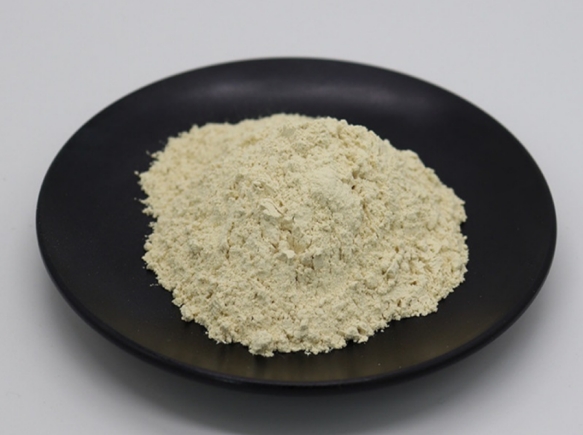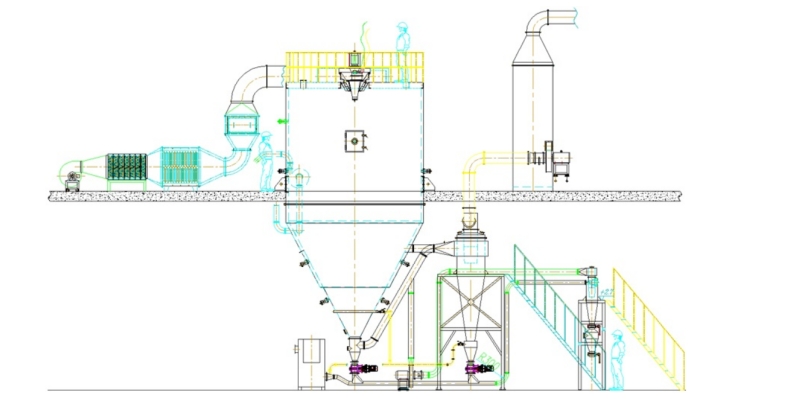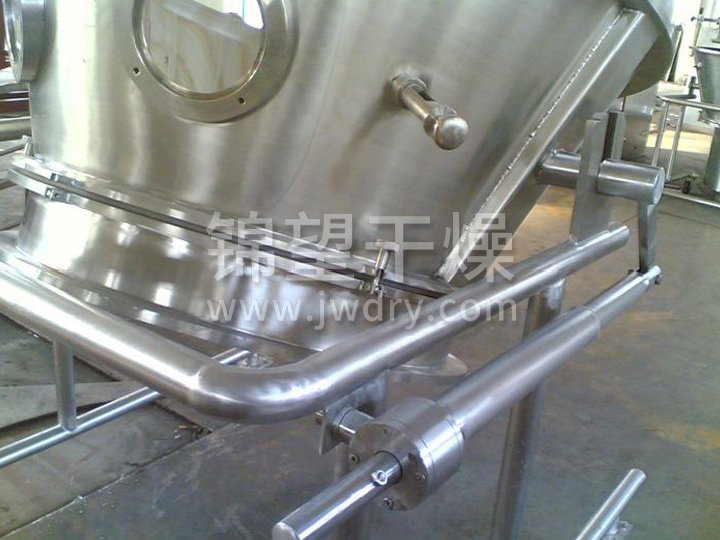Enzyme preparations are biological products with catalytic function after enzyme purification and processing. The application fields of enzyme preparations are expanding, and the demand for them continues to increase in the food, feed, pharmaceutical, textile, paper and other industries. For example, in the food industry, with the growing demand for healthy food and functional food, the dosage of enzymes such as amylase and protease used in the production of bread, juice, dairy products, etc., is rising; in the field of pharmaceuticals, the application of enzymes in the diagnosis of diseases, biopharmaceuticals, etc., has become increasingly widespread.In 2021, China's enzyme preparations market exceeded 3.9 billion yuan, with a total production of 1.89 million tons. The production of enzyme preparations in China continued to expand during 2016 to 2023.

With the development of related industries, the quality and stability of enzyme preparations are more and more demanding. Granulating spray dryer can produce enzyme preparation products with uniform particle size, good fluidity and high stability, which is in line with the trend of improving industry norms and quality standards, and thus the market demand for it will increase accordingly. Jinwang Drying's spray drying technology continues to innovate and develop, and has achieved great results in the research and development of new atomizers, the optimization of drying process, and the intelligentization of control system, etc., which makes the performance and efficiency of enzyme granulating spray dryer continuously improve, and it can better satisfy the needs of the production enterprises, so as to expand the space of its market application. Intelligent control system can monitor and adjust the parameters in the drying process in real time, improve the production efficiency and product quality, reduce energy consumption and cost, and enhance the market competitiveness of the products.

Enzyme Granulation Spray Dryer Workflow
The enzyme solution or suspension is transported to the top of the spray dryer through the feeding device, and under the action of high-speed centrifugal force or pressure, the material is atomized into tiny liquid droplets. These droplets are in full contact with the hot air entering from the bottom of the dryer, and the evaporation of water is completed in an instant, forming dry enzyme particles. The hot air and the material flow side by side or against the flow, so that the drying process is more efficient, and at the same time to avoid overheating of the material and lead to the loss of enzyme activity.
(1) Preparation stage
Check the equipment: check whether the various parts of the dryer are intact, including the feeding system, drying system, dust removal system, heating system and electrical system, etc., to make sure that they are firmly connected and free from looseness, leakage and other problems.
Prepare raw materials: pre-treat the enzyme solution or suspension, such as filtering to remove impurities, stirring evenly, adjusting the concentration to the appropriate range, etc., in order to ensure that the material has good fluidity and atomization effect.
Configuration of auxiliary equipment: turn on the air compressor, heat source and other auxiliary equipment, and check whether its operating status is normal, to ensure that it can provide stable compressed air and heat for the drying process.
(2) Parameter setting stage
Setting temperature: According to the characteristics and drying requirements of enzyme preparation, set the air inlet temperature and air outlet temperature of drying room through temperature controller, generally the air inlet temperature is between 100℃~300℃, and the air outlet temperature is adjusted according to the drying degree of material and the requirement of keeping enzyme activity.
Adjust the feeding speed: according to the production capacity of the dryer and the drying characteristics of the material, set the appropriate feeding speed, usually feeding speed between 5~50L/h, to ensure that the material can be fully atomized and dried in the drying chamber, while avoiding incomplete drying or clogging of the nozzle due to too fast feeding.
Determine the atomization parameters: according to the nature of the enzyme preparation and the size of the required particles, select the appropriate type of atomizer and adjust the atomization pressure, nozzle size and other parameters.
(3) Preheating stage
Turn on the preheating: turn on the preheating function of the dryer, so that the temperature inside the drying chamber gradually rises to the set air inlet temperature, the preheating time is generally 10~30 minutes, the specific time depends on the model of the dryer and the volume of the drying chamber.
Stabilization of temperature: During the preheating process, pay close attention to the temperature change inside the drying chamber to ensure that the temperature is stabilized near the set value, with a deviation of no more than ±5℃, so as to ensure the stability of the drying process and the drying quality of the enzyme preparation.
(4) Spray drying stage
Feeding and atomization: The pre-treated enzyme preparation solution or suspension is transported to the atomizer through the feeding system, and under the action of high-speed centrifugal force or pressure, the material is atomized into tiny droplets, and the diameter of the droplets is generally between 10~100μm.
Heat exchange drying: the atomized liquid droplets are in full contact with the hot air entering from the bottom of the drying chamber, and the evaporation of water is completed in an instant, forming dry enzyme particles. The hot air and the material flow side by side or against the flow, so that the drying process is more efficient, and at the same time to avoid overheating of the material, resulting in the loss of enzyme activity.
Drying monitoring: During the drying process, the temperature, humidity, pressure and other parameters inside the drying room are monitored in real time by temperature sensors, humidity sensors and other monitoring equipment, and the parameters such as feeding speed, air inlet temperature and air outlet temperature are adjusted in time according to the monitoring results to ensure the stability of the drying process and the consistency of product quality.
(5) Discharge stage
Particle collection: the dried enzyme particles gradually settle to the bottom of the drying chamber under the effect of gravity, and are discharged through the discharge port and collected in the aggregate barrel. For some finer particles, they may be discharged together with the drying air, at this time, they need to be separated and collected through the dust removal system to improve the recovery rate of the product.
Quality testing: The collected enzyme particles are tested for quality, including particle size distribution, moisture content, enzyme activity and other indicators to ensure that the product meets the quality standards. If the product quality does not meet the requirements, the drying process parameters need to be adjusted and optimized until the product quality is qualified.
(6) Equipment cleaning and maintenance stage
Equipment cleaning: After completing the drying operation, close the feed pump, heating device, fan and other equipment in time, and then clean the dryer after the temperature inside the drying room is reduced to a safe temperature. Cleaning includes cleaning the atomizer, drying chamber, pipeline, filter and other components to prevent material residue and blockage, affecting the next use.
Equipment Maintenance: Regularly maintain the dryer, check whether the various parts of the equipment are worn and aged, and replace the damaged parts in time; check and maintain the electrical system and control system to ensure the normal operation of the equipment; at the same time, lubricate and anti-corrosion treatment of the equipment to prolong the service life of the equipment.



 Tel
Tel E-mail
E-mail Address
Address
